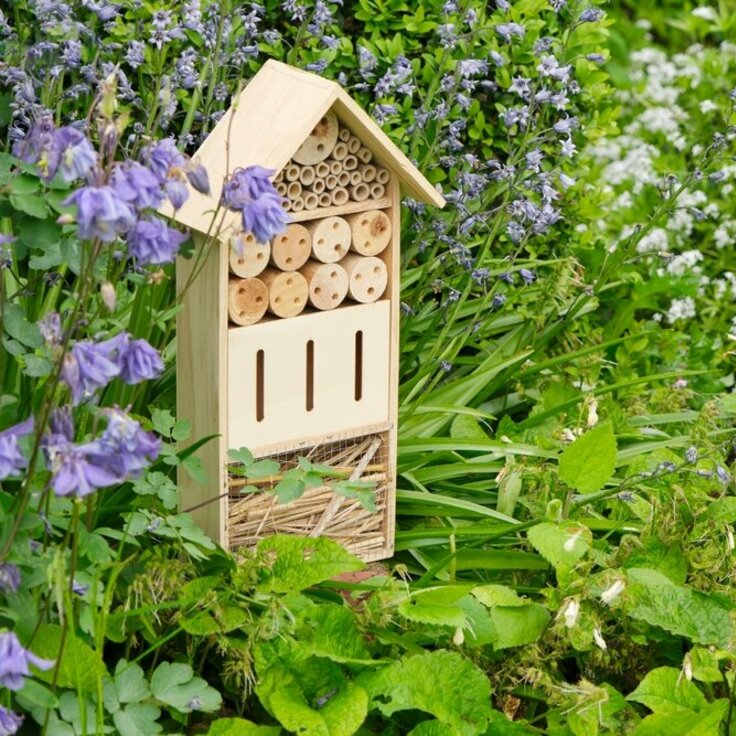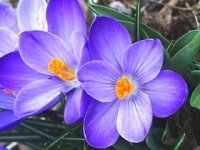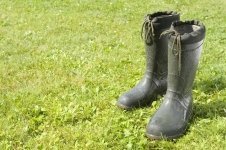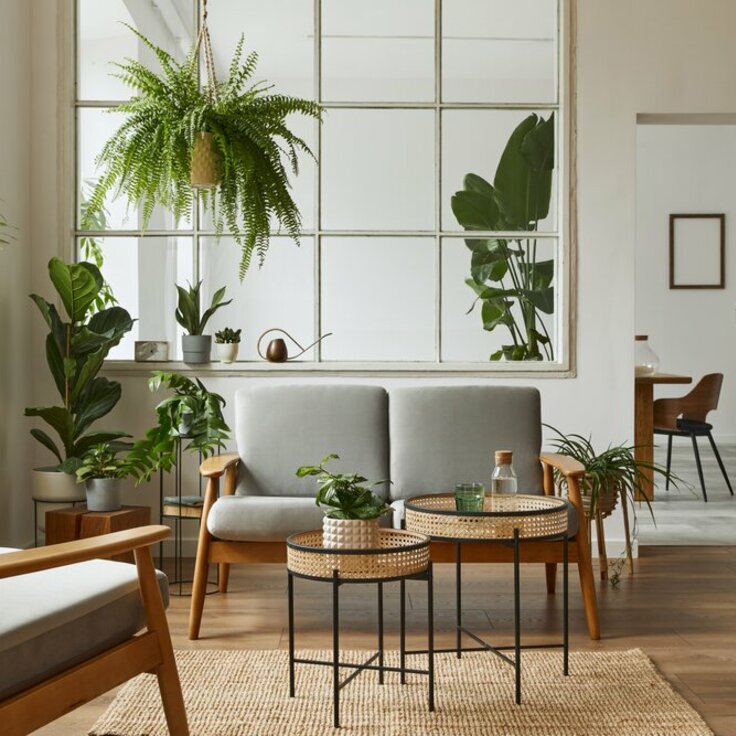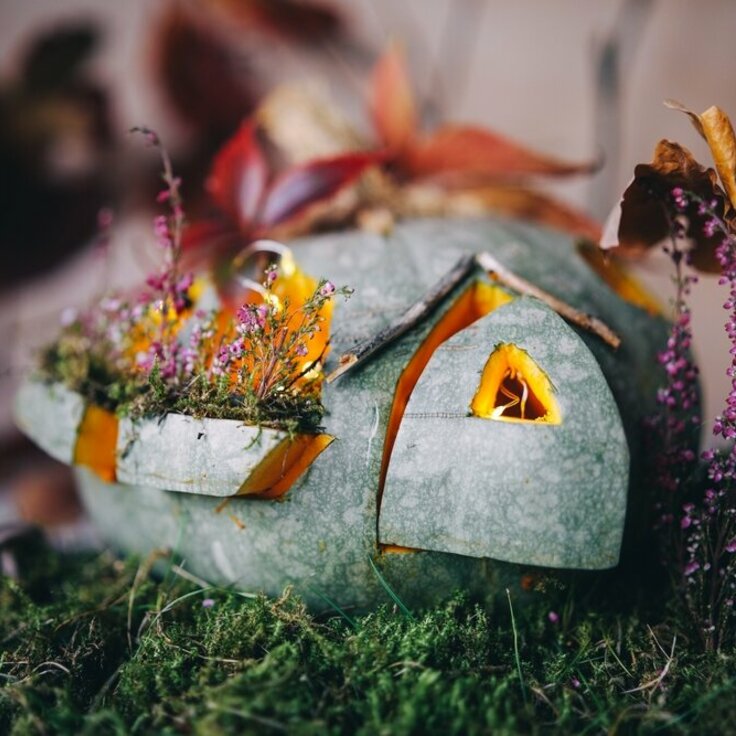Summer Garden Chores
Summer heat is upon us, and it's not only the gardeners that are wilting in midday. Our plants may go limp as well, and more than ever they need our TLC to keep them healthy and productive, especially if they are expending energy producing food for our tables. It may mean readjusting our schedules a bit, even getting up earlier water the garden before we head off to work or heading out to pluck those ripe tomatoes before we plop down in front of the TV in the evening. By making the most of our time during the cool of the morning or early evening, we can keep both the garden and the gardener at peak performance.
Watering
Soaker hoses or drip irrigation not only allow you to water most efficiently but they also reduce the amount of time you have to devote to this chore. They are definitely a worthwhile investment for most gardeners. Directing water into the soil rather onto the plants themselves also will help keep disease problems in check. So if you aren't already using this type of irrigation, take measurements and map out what you need this summer and purchase what you need during winter's off time. Then you'll be ready to set up your system in time for next spring's growing season.
Container plantings are like pets. They need attention every day. Check their water needs daily or even twice a day when the weather is really hot, especially small containers and hanging baskets. Self-watering containers with a built-in water reservoir make container gardening less of a chore. And as with your your pets, keep in mind that you'll need to arrange care for your container gardens when you're off on vacation. Watering well and then setting containers in a shaded spot can carry most plants through a weekend, but for longer periods of time, a plant sitter or a watering system on a timer will be needed.
If you're using a sprinkler to water your vegetable and perennial gardens, early morning is the best time to irrigate. You'll lose less water to evaporation and plants will have a chance to dry during the day. If you water in the evening, plants will stay wet through the night, setting the stage for fungus disease problems.
For newly planted trees and shrubs, it's important to make sure that the rootball of the plant is moist since this is where the all the plant's roots are until it's become established and grown roots out into the surrounding soil. Frequent brief sprinklings with a hose do more harm than good because the water only wets the top few inches of soil -- it doesn't penetrate deeply enough to wet the entire root zone, leaving the plant parched. Letting a hose trickle at the base of the plant is often recommended, but the problem with this method is that often much of the water runs off into the backfill rather than going into the rootball. Also it's easy to apply too little, leaving the lower part of the rootball dry, or too much, filling the planting hole with water and leaving the root ball saturated, which can damage roots by depriving them of oxygen.
A better -- and easy -- technique is to drill several 1/8-inch holes in the sides near the bottom of a 5 gallon bucket. Set the bucket next to your tree or shrub and fill it halfway with with water. The water will seep out slowly into the root zone. Move the bucket to the other side of the plant and repeat. This will provide 5 gallons of water to the rootball, an amount that is appropriate for most newly planted trees and large shrubs. Water this way twice a week for the first month; for the rest of the growing season, unless your soil is sandy, fill the bucket to the top and water once a week (on sandy soils stick to the twice a week regimen). This technique works with smaller plants as well; just adjust the total amount of water you are applying.
It takes several seasons for trees and shrubs to become fully established, so be sure to pay careful attention to watering during the second and third growing seasons, giving them water every 10-14 days if there hasn't been a soaking rain. Careful watering early on will reward you with strong, healthy plants that will prosper in years to come.
Weeding
By this time of the summer, most of the soil surface is mulched (well, that's the goal, in any case), but those opportunistic weeds still pop up, hugging plant stems as if they are hoping we won't notice them. Hand pulling or careful use of a hand weeder will dispatch them.
Before you go on vacation try laying down some newspapers in the walkways in the veggie garden and topping them with straw. If walkway weeds have gotten ahead of you, cut them with a mower or trimmer and leave them in place (as long as they haven't gone to seed) before laying down the newspaper. They will decompose underneath.
Bug Patrol
Beetle pests in the vegetable garden often include Mexican bean beetles and Japanese beetles. Picking off the bean beetles and squishing their yellow eggs on the undersides of the leaves can help to keep these pests under control. Japanese beetles will decimate plants like roses so visit the plants in the cool early mornings and evenings when the beetles are sluggish and knock them into a can of soapy water.
Harvesting
Fruits and veggies tend to lose texture and flavor when they are harvested during warm temperatures, so early morning is the ideal time to pick. Then keep them cool in the refrigerator -- except for tomatoes, which lose flavor when refrigerated.
Herbs also are best picked in the morning after the dew has dried but before the essential oils begin dissipating in the heat. If you are pulling up entire plants, hose off the leaves the day before. Harvest herbs before they flower or go to seed, unless you are growing them for the seeds, such as dill, cumin, caraway and coriander. In that case, allow the flowers to set seed. To dry the seeds, as the seed heads turn brown, cut the entire head and hang it upside down, enclosed in a paper bag. Keep pinching the stems of herbs you're growing for the leaves, such as basil, to keep them bushy and delay flowering.
Deciding when root crops -- beets, carrots, turnips -- are ready to eat can be a guessing game. The biggest roots will have the darkest tops and the fattest stems. So pull what appears to be one of the largest ones and see if it's the size you want. Ping pong or golf ball size beets of any variety will be sweet and tender.
The key to making the most of a midsummer garden is to visit often! Remember the saying, "A gardener's footprints are the best fertilizer."
Read more from the National Gardening Association.

